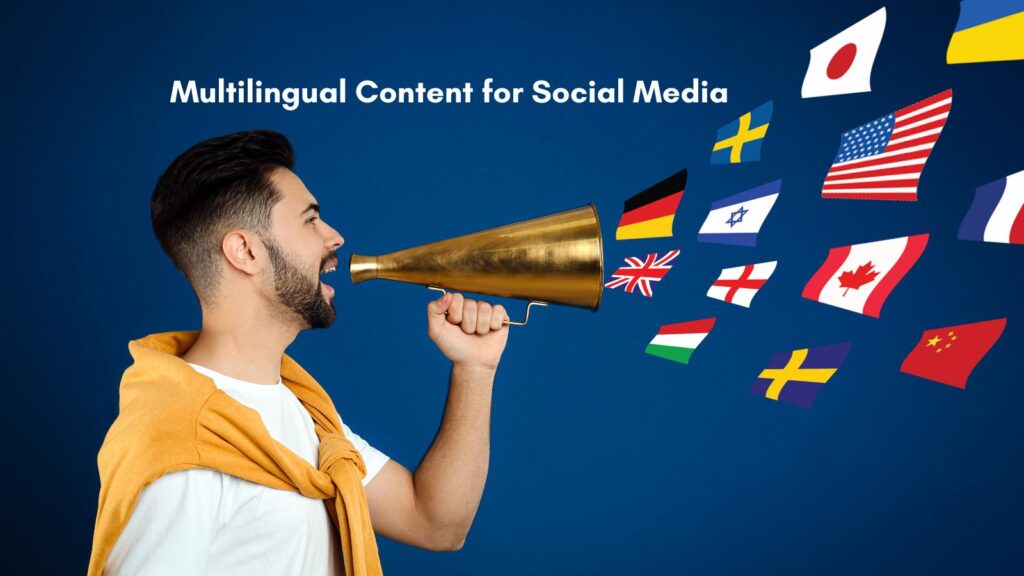The world is more connected than it has ever been, and businesses now can engage with customers from every corner of the globe. While social media platforms offer unprecedented access to international audiences, one challenge persists: language barriers. To resonate with a diverse customer base, a social media strategy that integrates multilingual content is essential for meaningful engagement and long-term success.
Businesses can use alternatives to services like Google Translate PDF to translate important documents for international stakeholders quickly and easily. However, for social media platforms, where communication needs to be dynamic and instant, a more sophisticated approach is required.
Table of Contents
Top Ways Multilingual Content Can Help Modern Businesses
Expanded Audience
Social media platforms such as Facebook, Instagram, X, and LinkedIn have users from all corners of the globe. Content in multiple languages can help businesses tap into new markets and connect with audiences who may otherwise feel excluded from your message.
When users see posts in their native language, they are more likely to engage with them. A multilingual online environment creates a more personalized experience for the user, boosts brand loyalty, and helps businesses build relationships with international audiences.
Moreover, it opens up opportunities for collaboration with influencers or other businesses in different regions, which further enhances your brand’s visibility.

Enhanced SEO with Multilingual Content
Multilingual content can significantly enhance your SEO efforts. Search engines like Google consider the relevance and quality of content in various languages when they determine how to rank websites and social media profiles.
Social media post translations can improve your visibility on search engines for users in different regions.
For instance, businesses that operate globally can benefit from translating their posts into languages spoken in their target markets. This increases the likelihood of appearing in localized searches and drives more traffic to your website or social media profiles.
Additionally, multilingual content boosts engagement, which signals to search engines that it is relevant and valuable.
Localized Content
A post that resonates with a US audience may not have the same impact on users in Australia or France. Cultural references, humor, and even color schemes may need to be adjusted to ensure the message is appropriate for the target market.
Localization ensures that the content feels native to the audience, which increases the chances of engagement and positive interaction.
Brands that take the time to localize their social media posts demonstrate cultural sensitivity and respect for their international audience. This builds trust and makes the brand more relatable to consumers in different regions, which is essential for long-term success in global markets.
How to Leverage Features with Multilingual Content Creation
Most social media platforms have recognized the need for multilingual content and have incorporated features to support it. For example, Facebook and LinkedIn allow users to post in multiple languages, which makes it easier to manage many campaigns on a single platform.
This feature is particularly useful for businesses with followers from diverse linguistic backgrounds.
X, while limited by character count, also supports such content through hashtags and user-generated translations. Instagram’s Stories feature enables users to add captions in multiple languages, which can help businesses engage with international audiences more dynamically and interactively.
AI and Automation in Multilingual Content: Social Media Strategy
AI-powered tools can help businesses translate their posts quickly and efficiently, which ensures consistency across languages. These tools not only translate but also localize content to fit the cultural nuances of each target market.
Automation tools can also help schedule posts in different languages based on the time zones of your audience. This ensures that your content will reach users at the optimal times for engagement, regardless of where they are in the world.
AI-driven analytics can also provide insights into how the content is performing, which allows businesses to adjust their strategy based on data. For example, if a particular post performs better in one language than another, businesses can tailor other campaign materials to better suit the preferences of their audience.
The Success of Multilingual Content Creation
Social media platforms provide various analytics tools that allow businesses to track engagement, follower growth, and the performance of individual posts. These metrics are essential for evaluating if your strategy is effective.
It’s also important to track the SEO impact of your content. Tools like Google Analytics can help businesses monitor traffic from different regions and assess if translations and localizations are driving more visitors to your website.
To Wrap up: Multilingual Content for Social Media Platforms
The role of multilingual content in social media strategy cannot be overstated. It enables businesses to expand their reach, improve SEO, and engage more effectively with international audiences.
Incorporation of AI-powered tools, localized content, and platform-specific features can help businesses ensure that their message resonates with diverse audiences across the globe.
A well-executed strategy not only enhances brand visibility. It also builds trust and loyalty among international customers. This opens doors to new opportunities for growth and success in the global marketplace.
- Can You Try mSpy for Free? What Parents Need to Know In 2026 - January 20, 2026
- Offline Marketing: Is It Still a Viable Marketing Strategy Today? - January 20, 2026
- How To Get Backlinks To Give Your Website Authority In 2026 - January 19, 2026



